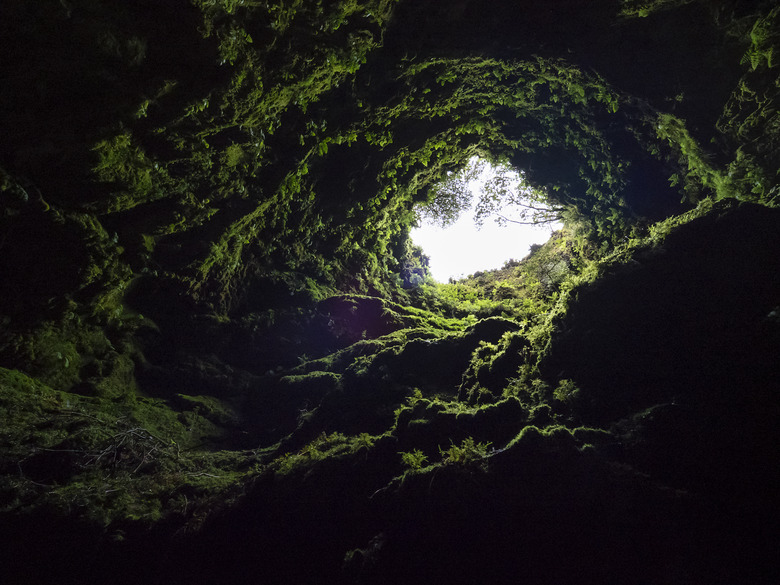Physical Address
Suite 5, 181 High Street,
Willoughby North NSW 2068
Physical Address
Suite 5, 181 High Street,
Willoughby North NSW 2068

By their very nature, caves are generally dark environments. Since plants rely upon photosynthesis (a process that requires sunlight) to make food, they are not typically found in the darkest parts of a cave. You might wonder if there are any plants that grow in caves. In fact, cave vegetation does exist in varying forms.
While caves are dark and do not provide much sunlight for photosynthesis, there are plants that live in caves nearer their entrances, from algae on up to higher plants like special nettles.
While we often think of caves as being without light, there is a gradation of light in a cave. Closer to a cave’s entrance, sunlight can penetrate to a certain degree. This affects the kinds of cave plants that subsist in this subterranean environment. For example, higher plants exist closer to a cave’s entrance, corresponding to the increased sunlight. More primitive types of plants subsist further within a cave.
While green plants need the sun to make food via photosynthesis, even the deepest caves might house thriving algae communities. These kinds of algae use other forms of metabolism, such as redox reactions, that do not require sunlight. Algae can therefore grow in the darkest parts of a deep cave. The algae in turn provide food for cave insects and other creatures, creating a vibrant ecosystem and food cycle.
Green algae, which uses chlorophyll a and b, is often found on the walls and roofs of cavern entrances. In the depths of sea caves, red algae thrive more, much as it would in the darkness of the deep sea. This is because red algae use different color pigments to absorb light according to water depth. Red and brown algae and diatoms use a different combination of chlorophyll (chlorophyll a and c) than green algae (chlorophyll a and b).
Mosses, liverworts and other bryophytes can thrive near the entrances of caves. Mosses prefer more light, and liverworts can survive with less. These and other plants that live near the cave entrance are threshold cave plants.
Some examples of mosses that grow in cave entrances include fox-tail feather-moss (Thamnobryum alopecurum) and common striated feather-moss (Eurhynchium striatum). Examples of liverworts that grow in or near cave entrances include Conocephalum conicum and Pellia endiviifolia.
More advanced plant species need more sunlight and do not grow underground. Plants such as saxifrage, wood sorrel, herb Robert, ivy, maidenhair spleenwort, brittle bladder-ferns, hart’s tongue ferns and dog violet grow at the threshold of caves, near the entrance. In lower light environments, such as cave entrances, plants grow taller to try to reach more light.
Recently, however, an intriguing discovery was made in China: researchers discovered cave-dwelling nettles that subsist in very dark environments. The nettles belong to the genus Pilea. They can be found growing in clumps inside the entrance of caves, such as the Yangzi cave.
While they do not grow in the utter darkness of a deep cave, these special nettles thrive in the very low light levels near a cave entrance. These nettles can grow in light levels as low as around 0.04 percent full sun. More research is needed to learn about this remarkable adaptation.
Plant roots represent another form of plants that grow in caves. In Mexico, tree roots in caves are important to Mayan culture and their concept of the world tree. In Quintana Roo, Mexico, tree roots have been studied in the walls and ceilings of caves. Researchers have found that plant tree roots expand deep to find reliable water.
Since caves provide reliable water sources, tree roots are not uncommon. These roots persist by growing through fissures in the karst environments of a cave. Some of the kinds of plants found with roots in these caves include ficus, palm, four kinds of lianas and Lonchocarpus, a kind of legume.
Such roots can either hang from a cave ceiling or extend from cave walls. The roots also sometimes form root masses in cave water. These tree roots provide habitats for cave animals, be they visitors or residents. Roots as cave plants are also thought to help develop ‘moonmilk,’ a whiteish cave formation resulting from the interaction of microbes and carbonate.